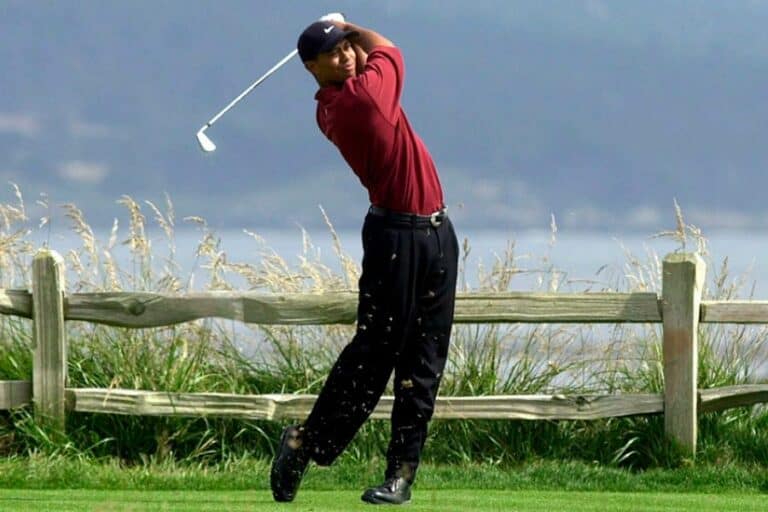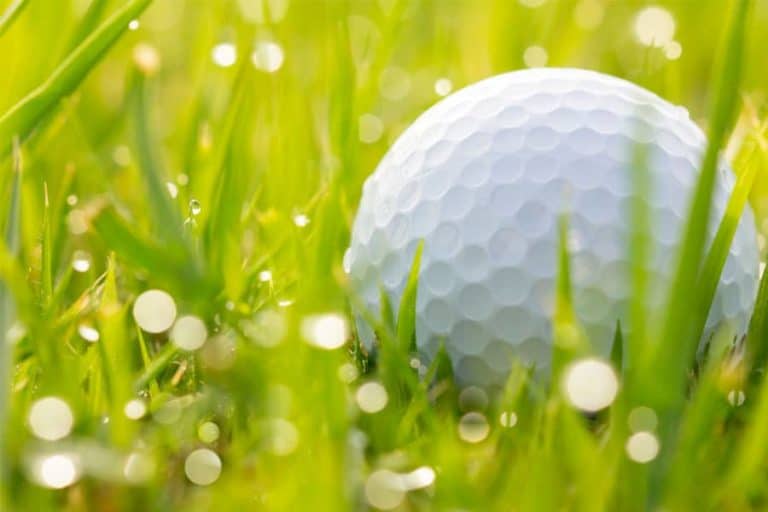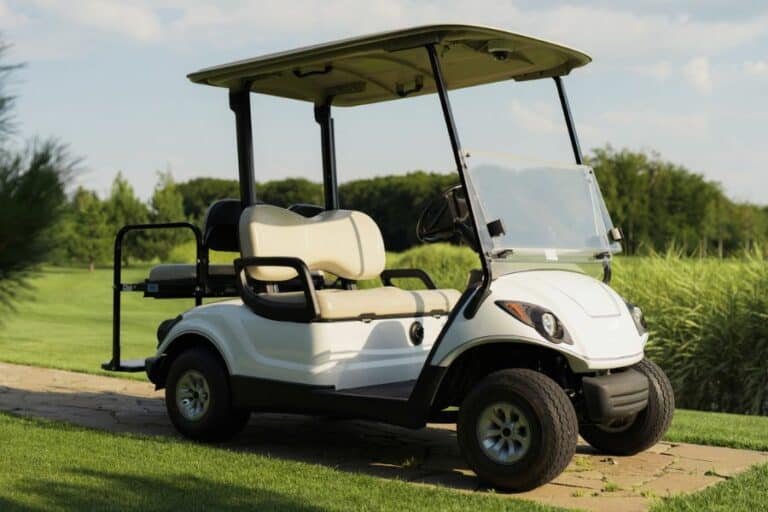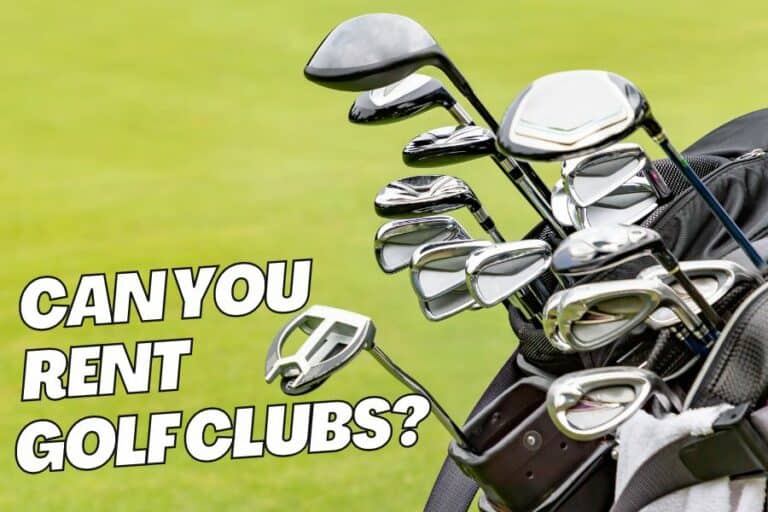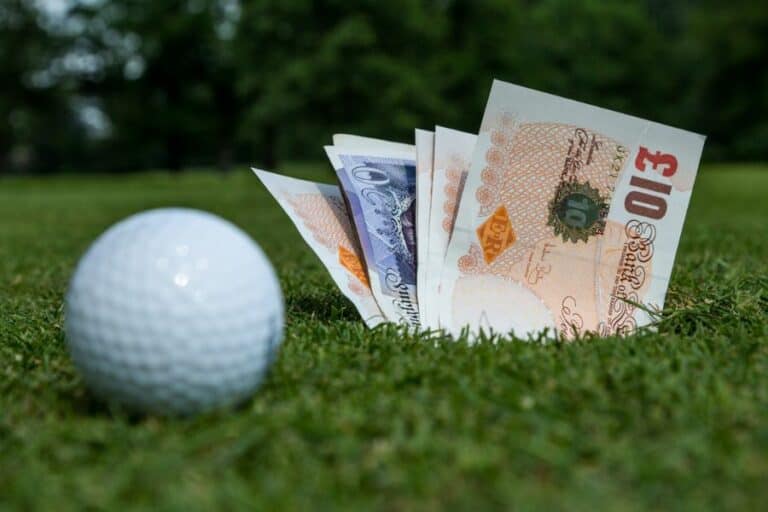What Is a Flyer in Golf: How to Spot It?
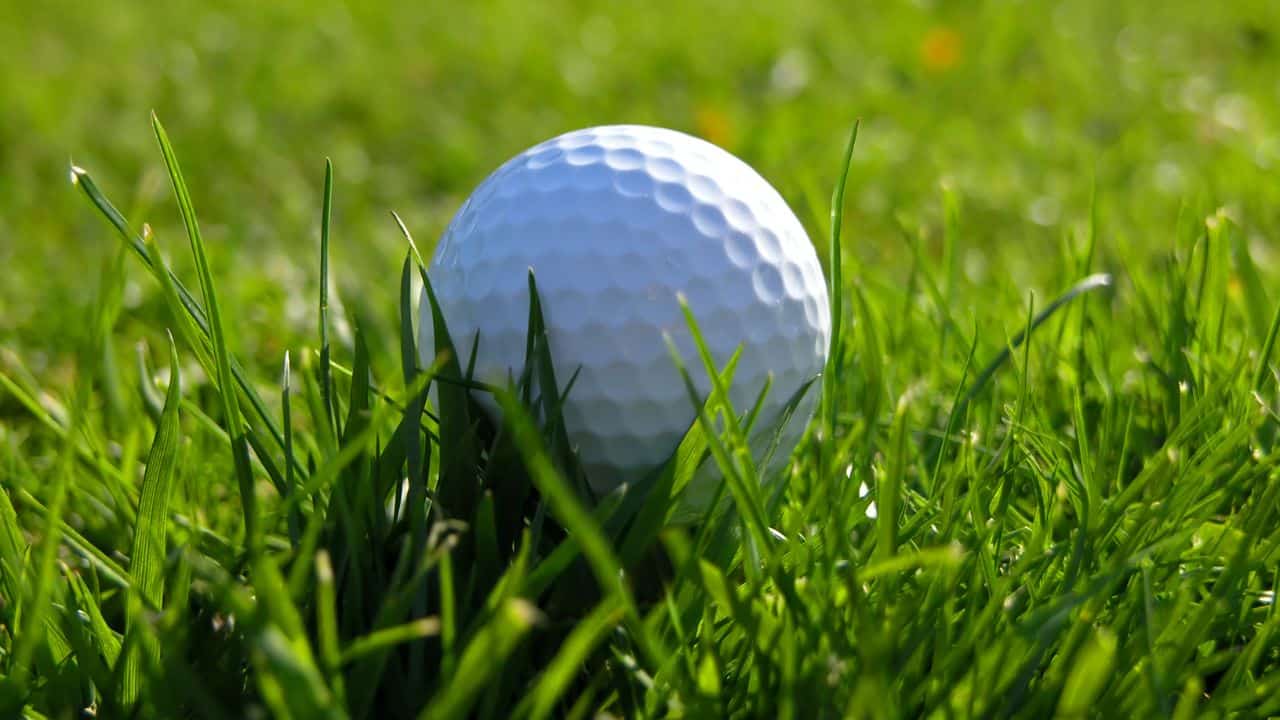
Flyers are a common occurrence in golf, and they can be both a blessing and a curse for golfers. On one hand, hitting a flyer can add extra distance to a shot and help a golfer reach the green in fewer strokes.
On the other hand, flyers can also be unpredictable and difficult to control, leading to shots that miss the target or end up in a hazard.
I. What Is A Flyer In Golf?
A flyer in golf refers to a shot that travels farther and with less control than expected due to an unusually high launch and reduced spin. This typically occurs when the golf ball is sitting in long, lush grass or rough, often referred to as “deep rough.”
When the clubface strikes the ball, moisture or matter such as grass or dirt can get trapped between the club face and the ball, reducing the normal friction or grip between the two. This can cause the ball to launch higher and travel further than intended.
II. Understanding the Flier Lie
A flier lie refers to a situation where the golf ball sits on top of longer grass blades in the rough, with the grain of the grass pointing toward the target. When a shot is played from this lie, the grass trapped between the ball and the clubface reduces the spin, causing the ball to fly farther and roll out more upon landing. This unexpected increase in distance can lead to missed targets and frustration for golfers.
Why Does A Flier Lie Happen?
The flyer lie is most commonly encountered when hitting shots from short to medium-length rough. It occurs due to the grass’s interaction with the clubface at impact, creating less friction and reducing the amount of backspin typically imparted on the ball.
Factors such as the length of the grass, the direction of the grain, and the loft of the club can all contribute to the occurrence of a flyer lie.
III. Identifying a Flyer Lie: Signs and Cues
Recognizing a flyer lie is crucial for adjusting your strategy and club selection accordingly. While not an exact science, there are several signs and cues to look out for when determining if you have a flyer lie. It’s important to note that a flyer lie is unlikely to occur from the fairway or in thick rough. Instead, focus on the characteristics of the grass and the lie itself.
By observing the below-mentioned cues to assess the lie, you can better anticipate and prepare for a potential flyer lie:
1. Grass Length and Ball Position: A flyer lie often occurs when the ball is sitting on top of the grass blades rather than being fully buried. If you notice the ball sitting up in the rough, be prepared for a potential flyer lie.
2. Grain Direction: Take note of the grain of the grass – the direction in which the grass blades are growing. If the grain is pointing towards your target, there’s a higher likelihood of a flyer lie. The grain can influence how the club interacts with the grass and the resulting shot trajectory.
3. Moisture and Grass Type: Wet conditions and certain grass types, such as Bermuda grass, can increase the chances of a flyer lie. In addition, excess moisture on the ball, grass blades, or clubface reduces friction and spin, leading to longer shots.
IV. The Impact of a Flyer Lie on Club Selection and Shot Execution
Understanding how a flyer lie affects your shot and club selection is essential for managing the unexpected distance gain. While there are general guidelines, it’s essential to adapt your strategy based on the specific lie, yardage, and your skill level.
1. Club Selection: Going Long or Playing It Safe?
Deciding which club to use from a flyer lie requires careful consideration. In most cases, it’s advisable to take one club less than you would typically use from a similar distance. This adjustment compensates for the increased distance caused by the reduced spin on the ball.
For shorter yardages, especially with lofted clubs like wedges, consider going down by two clubs to minimize the flyer effect. Be aware that high-lofted clubs are more prone to significant distance gains from a flyer lie.
2. Choosing the Right Club for a Flyer Shot
The following are the factors to be considered to ensure you choose the right club for a flyer shot:
- Loft: When choosing a club for a flyer shot, you must consider the loft of the club. A club with a higher loft will promote more backspin, which can help control the ball’s trajectory and reduce the risk of a flyer. For example, an iron with a loft of 60 degrees will produce more backspin than an iron with a loft of 45 degrees.
- Type of the club: Another important factor to consider is the type of club. In general, shorter clubs tend to produce higher-spinning shots than longer clubs, so using a shorter club can help avoid hitting a flyer. Golfers can also adjust their swing speed and ball position to promote more backspin and reduce the risk of a flyer.
- Lie of the ball: Golfers can also make adjustments to their club selection based on the lie of the ball. If the ball is sitting up in the rough, for example, a golfer may want to use a club with a lower loft to reduce the spin rate and increase accuracy. On the other hand, if the ball is sitting down in the rough, a golfer may want to use a lofted club to help get the ball in the air and reduce the risk of a flyer.
3. Shot Execution: Techniques for Taming the Flyer
When it comes to executing the shot from a flyer lie, there are several techniques you can employ to minimize the flyer effect and regain control over your distance and trajectory.
1. Ball Position: Adjust your ball position slightly back in your stance, approximately an inch behind its usual position. This adjustment promotes a steeper angle of attack, minimizing the grass’s interference between the clubhead and the ball.
2. Clubface Management: Open the clubface slightly at impact to increase the launch angle. This helps counteract the reduced spin and allows for a higher flight trajectory. Experiment with different amounts of clubface opening to find the optimal balance.
3. Swing Adjustments: Adopt a more sweeping motion through impact, resembling a long putting stroke. This sweeping action helps pick the ball off the top of the grass, ensuring solid contact and reducing the chances of the clubhead sliding underneath the ball.
4. Mindful Strategy: Consider playing for the extra distance and rollout from a flyer lie. Evaluate the potential hazards and landing areas, and be willing to lay up or aim slightly short of your target to avoid going long. Minimizing the risk of a big miss is crucial when dealing with a flyer lie.
V. Impact of Flyer on Golf Game
Flyers can have a significant impact on the game, both positively and negatively. When executed correctly, a flyer can help a golfer clear an obstacle or reach a green that would have been out of reach with a standard shot.
On the other hand, a flyer can also cause a golfer to overshoot their target and end up in a difficult position. As a result, golfers must be aware of flyers and how to spot and play them.
- One way to do this is through practice, where golfers can learn how to identify flyer lies and adjust their shots accordingly.
- They can also work on their accuracy and precision, which can help them avoid hitting flyers altogether.
Flyers can also pose challenges on the golf course, particularly when it comes to hazards and targets.
- Golfers must take into account the possibility of hitting a flyer when aiming for a target, as this can affect their overall score.
- In tournaments, hitting a flyer can result in a bogey or worse, which can be detrimental to a golfer’s chances of winning.
Finally, weather conditions can also play a role in the impact of flyers on a golfer’s game.
- Wet conditions can increase the likelihood of flyers, while dry conditions can reduce the impact of flyers.
- Golfers must adjust their shots accordingly based on the weather conditions they are playing in.
Conclusion
The flyer lie in golf is a unique and often perplexing situation that can catch even the most experienced golfers off guard. Understanding its causes, identifying the signs, and implementing effective strategies to counteract the flyer effect will empower you to navigate this challenge with confidence.
FAQs
1. What is the difference between a flyer lie and a normal lie in golf?
The main difference between a flyer lie and a normal lie in golf is the amount of spin on the ball. A normal lie allows the club to make contact with the grass, which creates friction and spin on the ball. A flyer lie, on the other hand, reduces the amount of spin on the ball, which can cause it to travel farther than expected.
2. How can you tell if you have a flyer lie in golf?
You can tell if you have a flyer lie in golf by looking at the lie of the ball. A flyer lie will be sitting up in the rough and will look like it is ready to be hit. Additionally, you can test the lie by hitting a few practice shots and seeing how the ball reacts.
3. What are the effects of a flyer lie on a golf shot?
The main effect of a flyer lie on a golf shot is that it will travel farther than expected. This is because the ball is not in contact with the grass, which reduces the amount of spin on the ball. The lack of spin means that the ball will not stop as quickly when it hits the ground, and it may bounce or roll farther than expected.
4. How do you adjust your golf shot for a flyer lie?
To adjust your golf shot for a flyer lie, you should use a club with less loft than you would normally use. This will help to reduce the amount of spin on the ball and keep it from flying too far. You should also aim to hit the ball slightly harder than you would with a normal lie, as the lack of spin will cause it to fly higher and land softer.
5. How do you adjust your swing for a flyer lie in golf?
To adjust your swing for a flyer lie in golf, you should take less club and use a 3-quarter golf swing. This will help you make better contact with the ball and reduce the chances of a flyer. Additionally, you should choose the right clubs for the shot and learn how to identify your lie.
6. Can a flyer lie be beneficial in golf?
While a flyer lie can be beneficial in some situations, such as when you need to carry a hazard or reach a distant green, it can also be unpredictable and difficult to control. In general, most golfers prefer to have the ball sitting down in the grass, as this allows for more control and accuracy.



